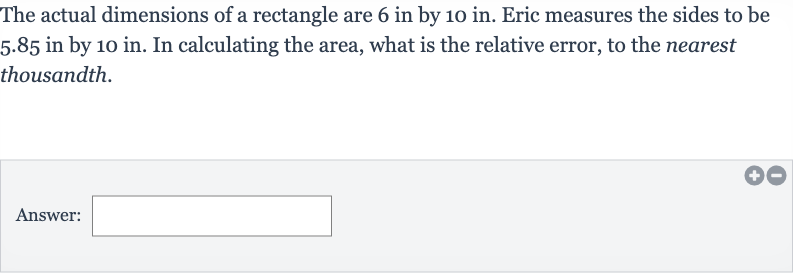Full solution
Q. The actual dimensions of a rectangle are in by in. Eric measures the sides to be . in by in. In calculating the area, what is the relative error, to the nearest thousandth.Answer:
- Calculate Actual Area: To find the relative error, we first need to calculate the actual area and the measured area of the rectangle.The actual area is found by multiplying the actual length and width.
- Calculate Measured Area: Now, we calculate the measured area () using the measured dimensions.
- Calculate Relative Error: The relative error is the absolute value of the difference between the actual area and the measured area, divided by the actual area.
- Express Relative Error: To express the relative error to the nearest thousandth, we keep three decimal places. (to the nearest thousandth)
More problems from Percent error: word problems
QuestionGet tutor help
QuestionGet tutor help
QuestionGet tutor help
QuestionGet tutor help
QuestionGet tutor help

